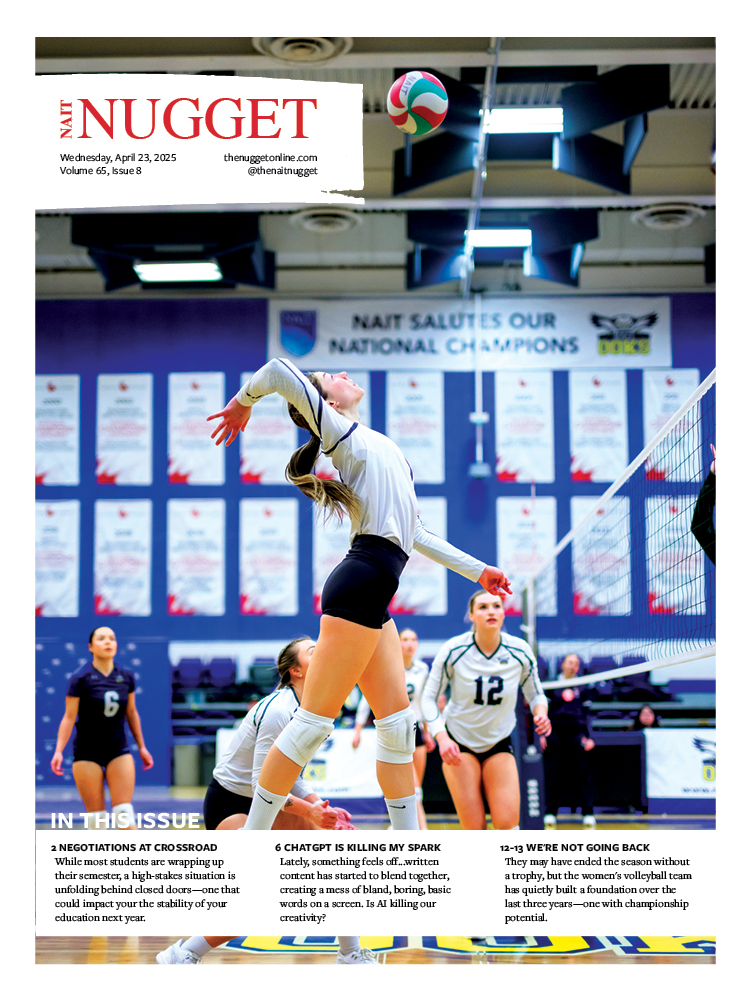We have been basking in the warm temperatures these past few days as well as last week. Temperatures were about 10 C above the seasonal average and morning lows were abnormally high as well. You are probably wondering when the cold is coming. I do not see any temperatures any colder than about average. This week started above average once again. We were above 0 C most days, meaning a freezing and thaw cycle.
We could see a slight fall in temperatures later this week into the weekend, but really, no worse than average (which is currently just below minus 5 C). We are in an El Nino winter pattern. This means some warmer temperatures, as we have already seen a preview these past couple weeks. El Nino is an unusually warm band of ocean water developing in the Pacific Ocean. This impacts our weather.
If you are heading out and about around NAIT you will be finding that it is not too cold to be outside throughout your school day.
Whether you are studying for exams or planning for Christmas, it could be a wise idea to spend some time enjoying this warm winter. This is the last Nugget issue of the season and my last weather article of the year. Hope you have learned some little tidbits in meteorology and stayed informed on your weather forecast while studying at NAIT.
Did you know?
This week, we will talk about different types of clouds. I have not spoken too much about cloud types in my weather articles and would like to teach you a little bit about clouds this week. Hope you find the information interesting. Can you spot some of these different types of clouds during your school day around NAIT?
Cirrus clouds are long and wispy in nature. They are the highest clouds in the sky and composed of ice crystals. Could mean an approaching warm front somewhere in the far distance. Cirrostratus and cirrocumulus are part of the high level cloud group but are different from cirrus clouds in the way they look. Mid-level clouds look greyish and sheet-like in the sky. Altostratus are grey or blueish and are like sheets. Altocumulus looks like ripples in the sky or a sheet with ripples in it.
Nimbostratus is a grey rain cloud covering the sky with no distinct pattern. It is very thick and is basically one solid grey cloud. Low level clouds are cumulus, stratus and cumulonimbus.
Cumulus is known as fair weather clouds, as a result of convection. Normally appearing late in the afternoon during the summer after some heat has built up. Darker base and lighter top. A stratus cloud has a uniform base and is a grey layer. A cumulonimbus cloud is a storm cloud. It’s the tallest cloud of them all as it fits across all levels in the sky. It can bring violent weather, such as tornadoes and heavy rain.
Now you know!
Brandon Hess
Meteorologist in Training






